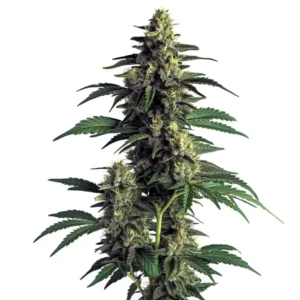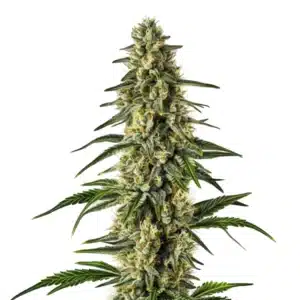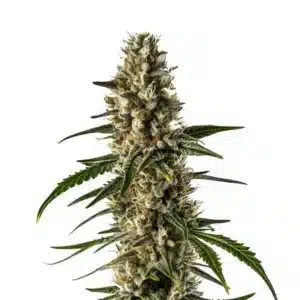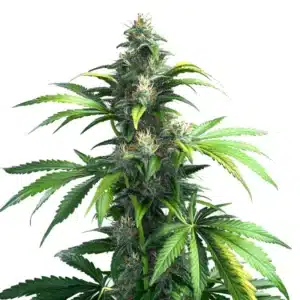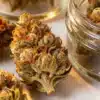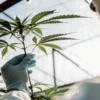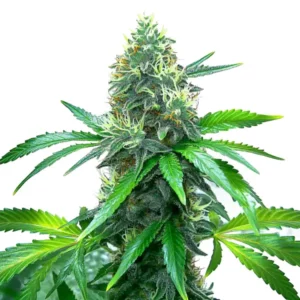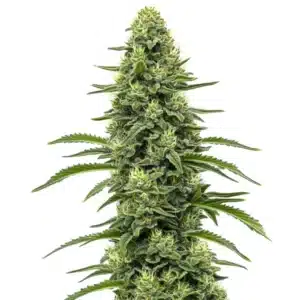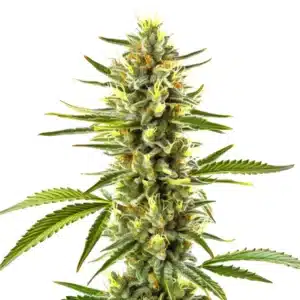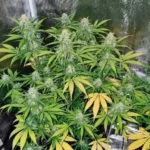
How Cannabis Uses Light to Signal Flowering
Cannabis plants are unique in how they respond to light. The transition from vegetative to flowering stages is triggered by changes in the light cycle. This is known as the cannabis photoperiod flowering response. In simple terms, how cannabis uses light to signal flowering is by detecting the length of daylight, which tells the plant when to start producing buds. As days become shorter, the plant interprets it as the right time to reproduce.
There are two main types of cannabis plants: photoperiod and autoflowering. Photoperiod plants rely heavily on the light cycle for cannabis flowering. They need a specific duration of darkness to initiate flowering, typically around 12 hours. On the other hand, autoflowering plants do not depend on light cycles, making them easier for beginners.
Recommended Strains
Northern Lights
|
|
THC | 17% (Medium) |
|
|
Type | Feminized |
|
|
Yield | Medium |
|
|
Phenotype | 90% Indica / 10% Sativa |
GG4
|
|
THC | 27% (High) |
|
|
Type | Feminized |
|
|
Yield | High |
|
|
Phenotype | 40% Indica / 60% Sativa |
The light cycle for cannabis flowering is crucial. When growing cannabis indoors, you control the light exposure. For photoperiod strains, switching to a 12/12 light cycle signals the plant to flower. This means 12 hours of light followed by 12 hours of darkness. Successful flowering depends on maintaining this balance.
Cannabis Photoperiod Flowering Response
The cannabis photoperiod flowering response is a natural adaptation. In nature, cannabis plants start flowering when the days get shorter after summer. This response ensures the plant flowers before winter, maximizing its chances of reproduction. Indoors, growers replicate this by adjusting light schedules.
It’s important to note that not all strains respond the same way. For example, Northern Lights from Blimburn Seeds has a strong photoperiod response. It’s a popular choice among growers for its resilience and high yield. Adjusting the light cycle appropriately enhances its flowering potential.
How cannabis uses light to signal flowering is fundamental to successful cultivation. By knowing the cannabis photoperiod flowering response, growers can optimize the timing and conditions for their plants. This knowledge allows for precise control over the plant’s development, ensuring optimal growth and flowering.
Additionally, knowing this response helps mitigate potential issues. For instance, if plants are not flowering as expected, growers can investigate light exposure as a primary factor. By adjusting the light cycle for cannabis flowering, growers can often resolve these issues and promote healthy, robust plants.
Light Cycle for Cannabis Flowering
Setting the right light cycle for cannabis flowering is key. When transitioning from the vegetative stage, reduce the light exposure to 12 hours per day. This mimics the natural environment where daylight decreases in the fall. Consistent light reduction triggers the flowering hormones in the plant.
Growers often use timers to ensure precision. A timer helps maintain the exact light and dark periods needed for flowering. It’s a simple tool that can significantly impact your plant’s health and yield. For strains like Blue Dream from Blimburn Seeds, maintaining a strict light cycle maximizes flowering success.
Maintaining a stable light cycle for cannabis flowering not only supports plant health but also reduces stress. Stress can lead to hermaphroditism, where plants develop both male and female flowers, potentially seeding the crop and diminishing the yield. Thus, consistency in light cycles is critical.
Besides to light duration, the quality of light should not be overlooked. High-quality grow lights that provide a full spectrum can enhance the flowering stage, promoting better bud development and potency. This attention to detail in the light cycle for cannabis flowering can make a significant difference in the final product.
Promos & Deals
Cannabis Flowering Light Requirements
Knowing cannabis flowering light requirements is critical. During the flowering stage, plants need adequate light intensity and duration. This ensures they produce dense buds and high yields. Light intensity is often measured in lumens or PAR (Photosynthetically Active Radiation).
Indoors, LED lights are a popular choice due to their efficiency and spectrum range. They provide the necessary brightness while consuming less energy. Strains like Gorilla Glue #4 from Blimburn Seeds benefit from high-intensity light during flowering, resulting in robust bud development.
The cannabis flowering light requirements also include ensuring the right temperature and humidity levels. Excessive heat or humidity can negatively affect the flowering process, leading to mold or nutrient burn. Balancing these environmental factors with light intensity contributes to successful flowering.
Moreover, the position of lights plays a role in meeting cannabis flowering light requirements. Lights should be placed at an optimal distance to prevent burning the plants while ensuring adequate coverage. Regular adjustments as plants grow can help maintain the ideal light environment throughout the flowering stage.
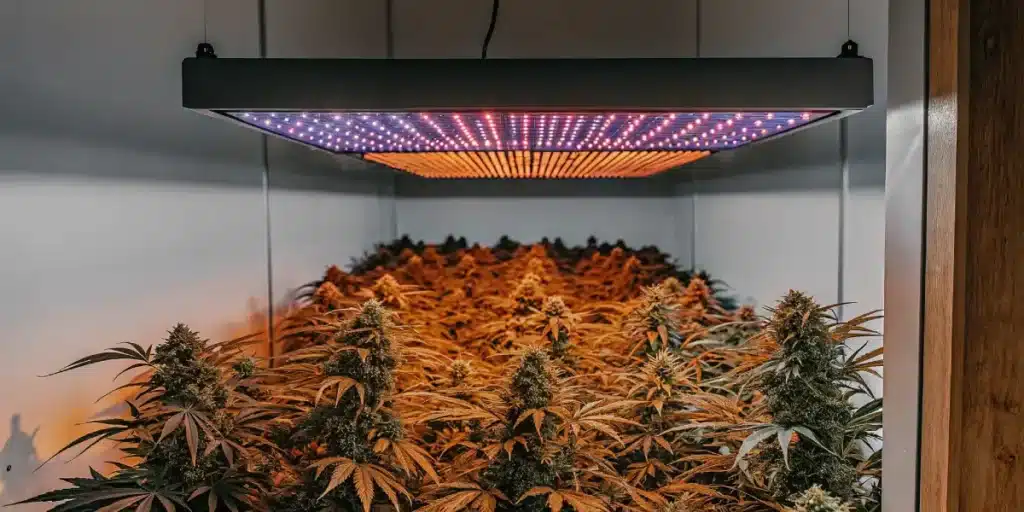
Effect of Light Spectrum on Cannabis Flowering
The effect of light spectrum on cannabis flowering is significant. Different light colors influence plant growth in various ways. During flowering, red and far-red light spectrums are crucial. They promote flowering and bud development, enhancing the overall yield.
Blue light, while essential during the vegetative stage, is less critical during flowering. However, a balanced spectrum is still necessary for healthy plant growth. Many LED grow lights offer adjustable spectrums, allowing growers to customize light settings for each stage.
How cannabis uses light to signal flowering is intricately linked to the effect of light spectrum on cannabis flowering. The right spectrum not only enhances flowering but also affects the quality of the buds, including their aroma, flavor, and potency.
Investing in lights that offer a customizable effect of light spectrum on cannabis flowering allows growers to adapt to specific strain needs. This flexibility can lead to optimized growth conditions and improved end results, providing a significant advantage in cannabis cultivation.
Cannabis Photoperiod and Flowering Stages
Cannabis photoperiod and flowering stages are interconnected. The flowering phase is divided into early, mid, and late stages. Each stage has specific needs in terms of light, nutrients, and care. Understanding these stages helps you provide the best environment for your plants.
During the early flowering stage, the plant stretches and forms bud sites. Adequate light is crucial to support this growth. As the plant moves to the mid-flowering stage, focus on maintaining consistent light and darkness periods. This ensures continuous bud development and maturation.
Recognizing the cannabis photoperiod and flowering stages allows growers to tailor their care techniques. By adjusting nutrient levels and environmental conditions according to each stage, growers can support the plant’s natural growth cycle, enhancing yield and quality.
In the late flowering stage, paying attention to how cannabis uses light to signal flowering becomes even more crucial. During this time, plants focus on resin and cannabinoid production. Proper light management ensures that this critical phase leads to high-quality harvests.
Real-Life Growing Examples
John, a first-time grower, started with a small indoor setup. He chose the Critical strain from Blimburn Seeds due to its forgiving nature. By following the 12/12 light cycle, he successfully transitioned his plants to flowering. His experience highlights the importance of light management in cannabis cultivation.
Experienced growers often experiment with light cycles to optimize yields. Some gradually reduce light hours to mimic natural seasonal changes. This advanced technique can increase potency and bud size, especially for strains like OG Kush.
Another grower, Sarah, focused on the effect of light spectrum on cannabis flowering. By using adjustable LED lights, she was able to fine-tune the spectrum for each growth stage. This approach helped her maximize the resin production of her Zkittlez plants, resulting in a highly potent yield.
Outdoor growers like Mike leverage the natural cannabis photoperiod and flowering stages to their advantage. By knowing local light cycles, he times his planting to coincide with the natural decrease in daylight. This strategy minimizes the need for artificial light manipulation, leading to cost-effective and successful outdoor growth.
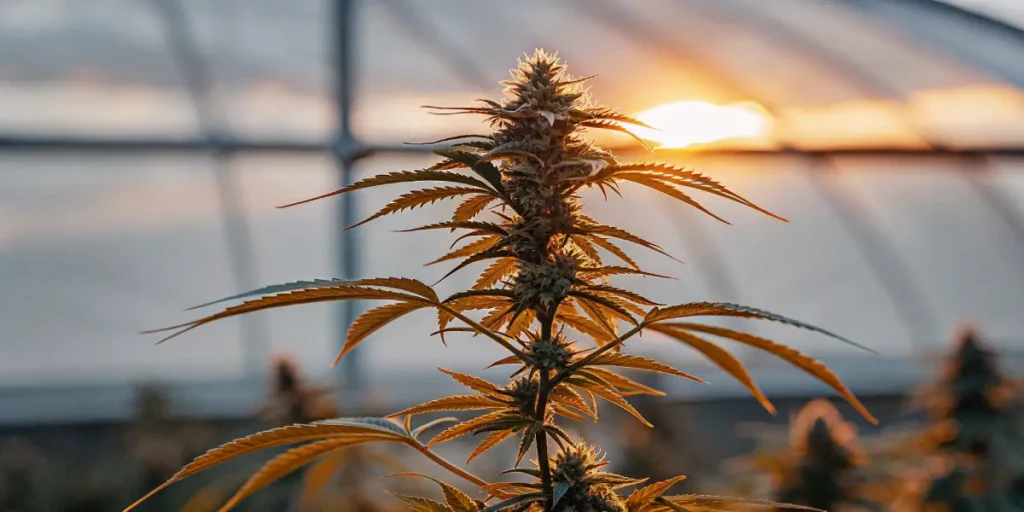
FAQs
What is the ideal light cycle for cannabis flowering?
The ideal light cycle for cannabis flowering is 12 hours of light followed by 12 hours of darkness. This mimics the natural shortening of daylight in autumn, signaling the plant to begin flowering. Consistency in this cycle is key to preventing stress and ensuring healthy flowering.
For indoor growers, using a timer can help maintain this schedule. It’s important to prevent any light leaks during the dark period as they can disrupt the plant’s flowering process. Properly managing the light cycle enhances the quality and quantity of the harvest.
Knowing how cannabis uses light to signal flowering through an ideal light cycle can make a significant difference in cultivation outcomes. By adhering to the recommended light cycle, growers can ensure a successful transition from vegetative growth to flowering.
Additionally, the ideal light cycle for cannabis flowering helps maintain the plant’s natural rhythm. This alignment with its internal biological clock fosters better growth conditions, leading to healthier plants and more abundant harvests.
How does light spectrum affect cannabis flowering?
Light spectrum plays a crucial role in cannabis flowering. Red and far-red spectrums are particularly important as they encourage flowering and bud development. While blue light is more beneficial during vegetative growth, a balanced spectrum is necessary for overall plant health.
LED grow lights often offer customizable spectrums, allowing growers to adjust the light according to the plant’s needs. Using the correct spectrum can lead to improved yields and higher-quality buds, crucial for strains like Zkittlez.
The effect of light spectrum on cannabis flowering can also influence the plant’s overall resistance to diseases and pests. A well-balanced spectrum supports robust plant health, making them less susceptible to common growth issues.
For growers looking to enhance specific traits such as flavor or aroma, adjusting the light spectrum during the flowering stage can be particularly beneficial. This level of control over the effect of light spectrum on cannabis flowering allows for more tailored and desirable outcomes.
Why is darkness important during the flowering period?
Darkness is vital during the flowering period because it helps trigger the plant’s hormonal changes necessary for flowering. Cannabis plants require uninterrupted dark periods to transition effectively from vegetative growth to flowering.
Light interruptions during the dark phase can confuse the plant, leading to delayed flowering or even reverting to vegetative growth. Ensuring complete darkness is crucial for maintaining the plant’s internal clock and promoting successful flowering.
How cannabis uses light to signal flowering is closely tied to the importance of darkness. A stable dark period ensures the plant’s internal processes remain on track, fostering optimal growth and development during flowering.
Moreover, growers should be diligent in checking for potential light leaks. Even minor exposure to light during the dark phase can significantly impact the flowering process, underscoring the need for careful management of dark periods.
Can light cycles affect the potency of cannabis?
Yes, light cycles can affect the potency of cannabis. Properly managed light cycles ensure the plant develops fully, leading to optimal cannabinoid production. Consistent light exposure during flowering promotes resin and trichome development, which are key to potency.
Growers may experiment with light cycles to enhance potency. Adjusting light intensity and spectrum during flowering can lead to higher THC levels. This technique requires experience but can significantly improve the final product’s quality.
The relationship between light cycles and potency highlights how cannabis uses light to signal flowering. Proper light management can amplify the plant’s natural potential, resulting in more potent and desirable end products.
For those seeking to maximize the psychoactive effects of their cannabis, understanding and leveraging the light cycle for cannabis flowering is an invaluable strategy. This approach can lead to enhanced cannabinoid profiles and superior quality harvests.
What are common mistakes in managing light cycles?
Common mistakes in managing light cycles include inconsistent light schedules and light leaks during the dark period. These errors can stress the plant, leading to poor flowering and reduced yields. Consistency and careful monitoring are essential.
Another mistake is not adjusting the light spectrum according to the plant’s stage. Using the wrong spectrum can hinder growth and flowering. Investing in adjustable LED lights can help tailor the light settings to the plant’s needs, ensuring optimal growth and flowering.
Misunderstanding the cannabis photoperiod flowering response can also lead to errors. Recognizing how cannabis uses light to signal flowering is crucial to avoid pitfalls and promote successful cultivation.
Additionally, neglecting environmental factors such as temperature and humidity during light cycle management can impact the flowering process. A holistic approach that considers all growth conditions will lead to better results and fewer mistakes.


